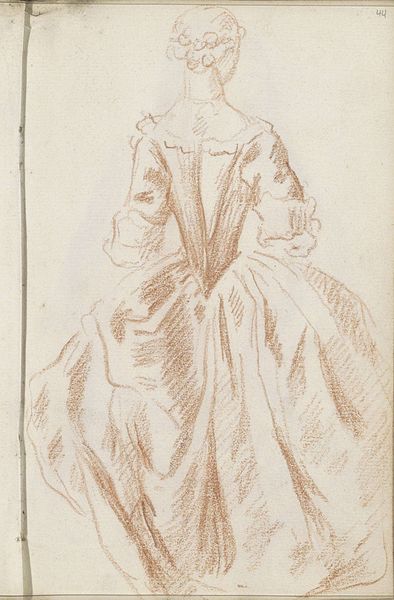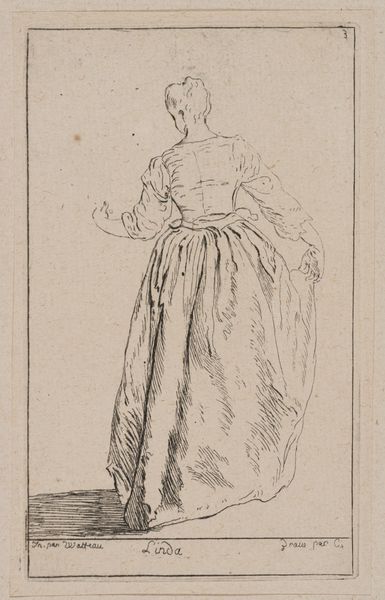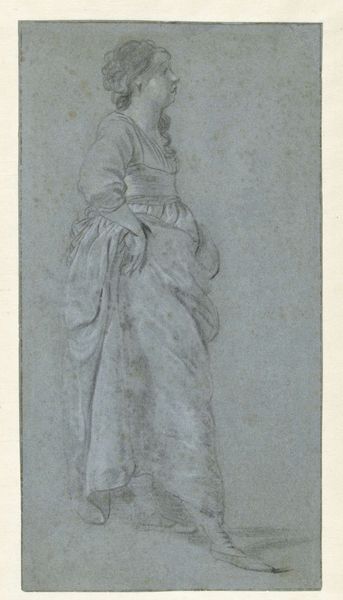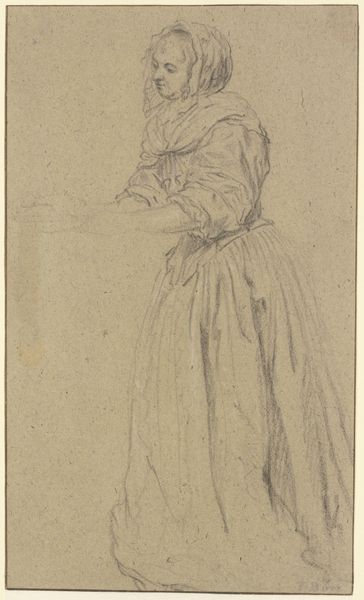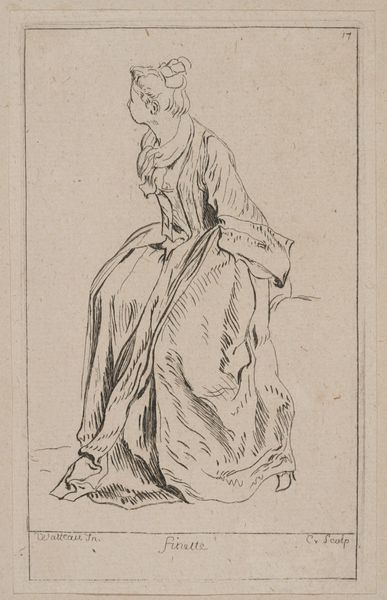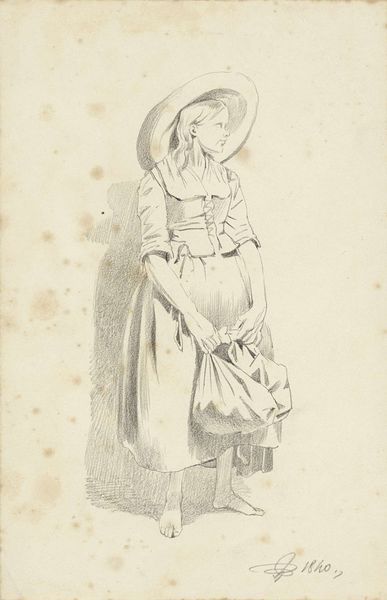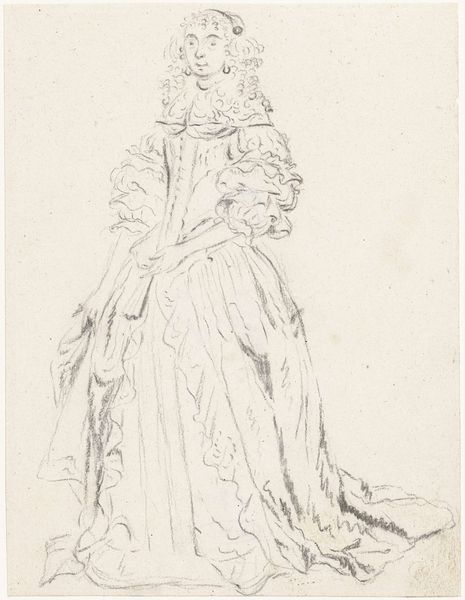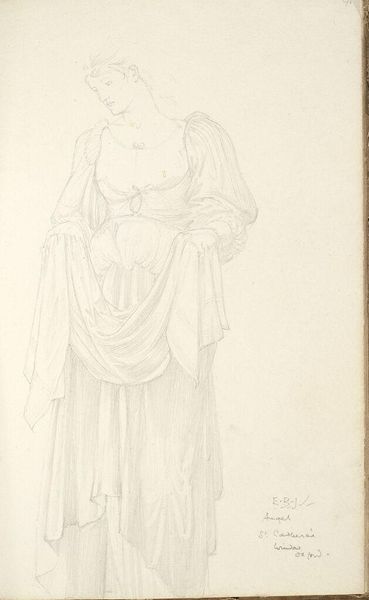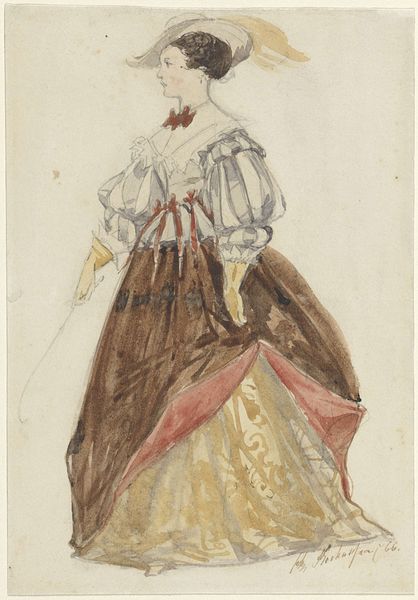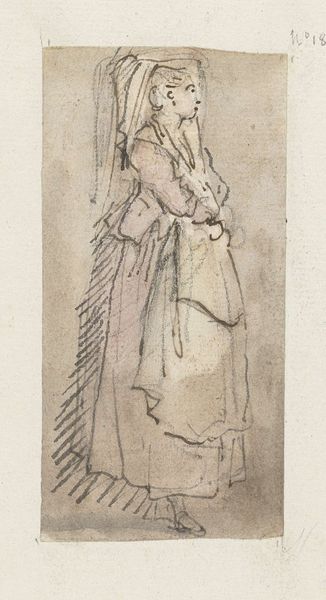
Studie van een staande dame met een hand rustend op haar rok, de andere iets geheven 1735 - 1807
0:00
0:00
drawing, pencil
#
portrait
#
drawing
#
pencil sketch
#
charcoal drawing
#
figuration
#
pencil
#
academic-art
Dimensions: height 294 mm, width 224 mm
Copyright: Rijks Museum: Open Domain
Curator: Hendrik Pothoven created this intriguing study around the late 18th century. The Rijksmuseum holds this drawing of a standing woman. It is rendered primarily in pencil, a medium well-suited to capturing the nuances of fabric and form. Editor: My initial impression is one of restrained elegance, but with a haunting emptiness. The absence of a head makes the elaborate gown almost spectral. It provokes questions about the personhood and constraints imposed on women in this period. Curator: Indeed. It's easy to focus on the artistry and not consider the social constraints inherent in these displays of status. Dresses like this were social signifiers and powerful determinants of status and potential marriage prospects. The work stands in contrast to contemporary portraiture. Editor: Absolutely. The lack of a face forces us to focus on the costume as a symbol. This type of portrait, or rather this study for a portrait, highlights how women were often valued, and viewed, for their aesthetic qualities, the finery that was carefully put on them rather than the human being it adorned. Curator: Costume studies like these allowed artists to meticulously plan for finished portraits and examine the socio-cultural trends reflected in clothing styles, especially considering its a drawing by Pothoven who was a popular portrait painter, we can consider this an artistic exploration. Editor: This piece acts as a silent commentary, reminding us of the objectification of women throughout history and the very visible way such control manifests. Curator: The skill in depicting texture and light is evident. From an art historical point of view, Pothoven successfully used pencil and charcoal in a subtle yet convincing way. Editor: Yes, the artist's technique draws attention, highlighting both the aesthetic qualities of the garment and prompting deeper thoughts about societal expectations, image and self. Curator: I find myself thinking about Pothoven and how this piece gives us a fresh opportunity to analyze his views, and artistic practice through the politics of imagery. Editor: Looking closely reminds me of the importance of critiquing portrayals and representations of identity, specifically on the subject of race and gender, for the way it shapes narratives of the female experience.
Comments
No comments
Be the first to comment and join the conversation on the ultimate creative platform.
